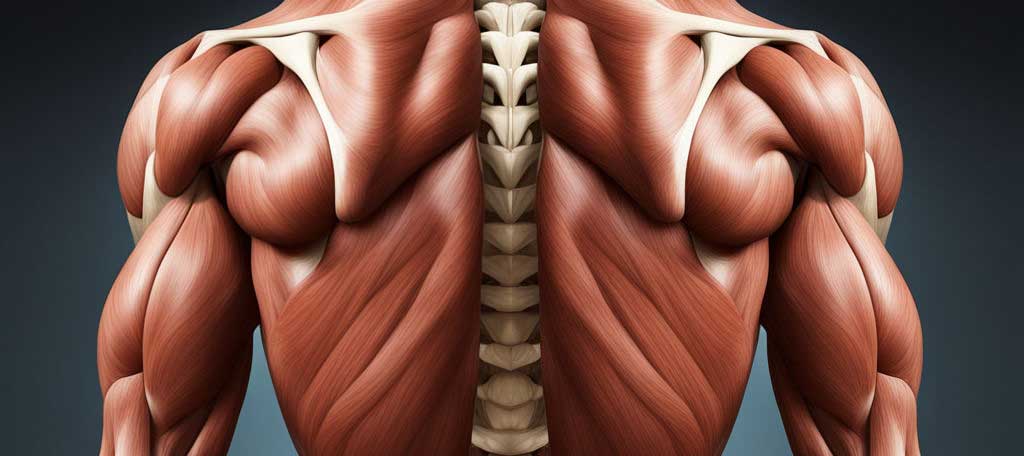Have you ever felt that nagging pain between your shoulder blades, especially after a long day at the desk or following an intense workout? If so, you might be dealing with rhomboid muscle pain. This type of discomfort, although common, can be quite bothersome and impact your daily activities. Understanding the causes, symptoms, and effective ways to relieve this pain can help you get back to feeling your best. Let’s dive into what rhomboid muscle pain is all about, and how you can manage it effectively.
Table of Contents
What is Rhomboid Muscle Pain?
The rhomboid muscles are located in the upper back, nestled between your shoulder blades. They play a crucial role in moving and stabilizing your shoulders, particularly in pulling your shoulder blades together. When these muscles become strained or overworked, they can cause pain that feels sharp or aching, making it uncomfortable to move your shoulders or upper back.
Common Causes of Rhomboid Muscle Pain
There are several reasons why you might experience pain in your rhomboid muscles. Here are some of the most common causes:
- Overuse or Strain:
- Repetitive motions, especially those involving pulling or lifting, can lead to overuse of the rhomboid muscles. Activities like rowing, lifting heavy objects, or even certain sports can cause this strain.
- Poor Posture:
- Sitting or standing with rounded shoulders for long periods is a common culprit. Whether you’re slouched over your computer or hunching while texting, poor posture can put undue stress on the rhomboid muscles, leading to pain.
- Injury:
- Sudden movements or direct trauma to the upper back can result in an injury to the rhomboid muscles. This might happen during sports, an accident, or even from lifting something incorrectly.
Recognizing the Symptoms
If you’re dealing with rhomboid muscle pain, you might notice the following symptoms:
- Sharp or Aching Pain: This pain is typically felt between the shoulder blades, and it can range from a dull ache to a sharp, stabbing sensation.
- Tightness or Stiffness: The muscles may feel tight, making it difficult to move your shoulders or upper back comfortably.
- Tenderness: You might feel tenderness when pressing on the affected area, indicating inflammation or muscle strain.
Treatment and Relief Strategies
Managing rhomboid muscle pain is all about relieving the discomfort and preventing it from recurring. Here are some effective ways to do that:
- Rest:
- One of the most important steps in recovery is giving your muscles time to heal. Avoid activities that strain the rhomboid muscles further.
- Ice and Heat Therapy:
- Applying ice to the affected area during the first 48 hours can help reduce inflammation. After that, switching to heat therapy can relax the muscles and improve blood flow, aiding in recovery.
- Stretching and Strengthening Exercises:
- Gentle stretches can alleviate tension in the rhomboid muscles while strengthening exercises can help prevent future strain. Focus on exercises that improve upper back strength and flexibility.
- Massage Therapy:
- A professional massage can work wonders for tight rhomboid muscles. It helps in releasing muscle knots and improving circulation, providing relief from pain.
- Correcting Posture:
- Improving your posture is key to preventing rhomboid muscle pain. Make ergonomic adjustments to your workspace and be mindful of your posture throughout the day.
- Pain Relief Medications:
- Over-the-counter anti-inflammatory medications, like ibuprofen, can help manage pain and reduce inflammation. Please don’t use any medication without proper consultation from a doctor or it may lead to to serious health complications.
Preventing Future Rhomboid Muscle Pain
Once you’ve managed to relieve the pain, it’s essential to take steps to prevent it from coming back. Here are some tips:
- Maintain Good Posture: Always be conscious of your posture, especially when sitting for long periods. Keep your back straight and shoulders relaxed.
- Incorporate Regular Exercise: Strengthening your upper back muscles through regular exercise can help prevent future strains.
- Take Breaks: If you’re doing repetitive tasks or sitting for long periods, take regular breaks to stretch and move around.
Here is a YouTube Video On How To Get Rid Of Rhomboid Muscle Pain
Conclusion
Rhomboid muscle pain, while uncomfortable, can be effectively managed with the right strategies. By understanding the causes, recognizing the symptoms, and implementing a combination of rest, therapy, and exercise, you can find relief and prevent future occurrences. Remember, your body is always communicating with you—pay attention to the signals, take action early, and maintain a lifestyle that supports your overall well-being.
By addressing rhomboid muscle pain with these practical tips, you’ll be better equipped to handle any discomfort that comes your way, keeping your upper back strong, healthy, and pain-free.

